Posts Tagged ‘dry’
{{start}}
{{end}}

{{+1}}Claret hopper{{-1}}
{{start}}
A popular fly in the United Kingdom this fly is equally at home early and late in the season in Australia. We don't have any burgundy coloured hoppers that I am aware of but this buggy looking fly often works when the first and last of the seasons terrestrials are around. Whilst not a strong floater this fly ticks all the boxes for those that want an enticing fly that will sit in the surface film.{{end}}

{{+1}}Geehi beetle{{-1}}
{{start}}
One of the key elements of this fly that has been overlooked in many fly patterns I have seen id the choice of the front hackle. Make sure its a 'cocky-y-bonddu' type hackle i.e. a ginger hackle with a black centre. The black centre of the hackle when wound in touching turns to the eye of the hook extends the beetle body along the full length of the shank of the hook and I an confident that is one of the keys to the success of this fly.{{end}}
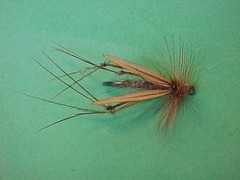
{{+1}}Daddy long legs – crane flies{{-1}}
{{start}}
Daddy long legs type flies are very popular in the United Kingdom and are becoming increasingly popular in Australia particularly in the middle summer weeks when the naturals find their way onto the water.{{end}}
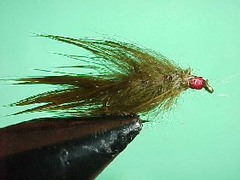
{{+1}}Fur fly{{-1}}
{{start}}
Conceptually these are a very simple fly but when tied with the right materials and in the right density they are a great all round fly. You can use them as a stream fly or for polaroiding or prospecting but in my opinion they are at their best when used as an attractor fly in a team of loch style flies. Choice of fur is important. If you can get died kangaroo that's OK but my preference is rabbit fur off a zonker strip.{{end}}
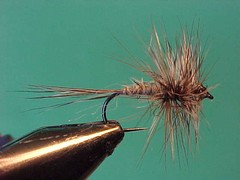
{{+1}}Gray duster – Chatto’s variant{{-1}}
{{start}}
Over time my tie of a gray duster has been corrupted to be a sort of melding of the gray duster that I was first introduced to and an Adams irresistible. At the end of the day the variant is an Adams irresistible without the wings and with a seals fur dubbing body.{{end}}
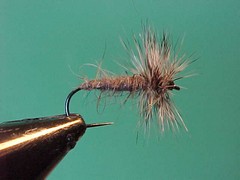
{{+1}}Gray duster{{-1}}
{{start}}
The original gray duster was designed as a midge cluster fly and consequently has no tail. It was one of the first flies I was introduced to and is easy to tie and works well on fish when they are taking midge on or near the surface. Because of its hackle it floats well and is capable of supporting a mide pupa suspended sub surface.{{end}}

{{+1}}Kate McLaren variant – fuzzel Katie{{-1}}
{{start}}
Seldom, at least in my case, fished alone this fly is a great top dropper or bob fly when lock style fly fishing. I particularly find it useful when yellow winged hoppers or other insects with yellow parts are on the trouts menu. It looks nothing like a hopper of course but I think the little bit of yellow in the tail as well as the movement of the fuzzeled body and the soft front hackle are often enough to trigger a response.{{end}}
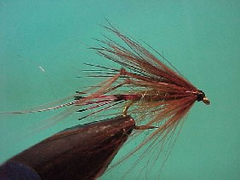
{{+1}}Green Peter – daddy variant{{-1}}
{{start}}
As many of you will be aware there is a Welsh fly called a "Green Peter". It was designed as a dry fly but is also a great Loch Style bob or middle dropper fly.{{end}}
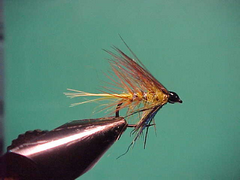
{{+1}}Invicta variant{{-1}}
{{start}}
The original Invicta was created by eminent English fly tier and tackle dealer James Ogden in the 1870's. With just a few tweaks this fly is as relevant today as it was 140 odd years ago. This is a great attractor fly at times when yellow winged hoppers and other insects with yellow body parts are around and yellow is a trigger color for trout.{{end}}














